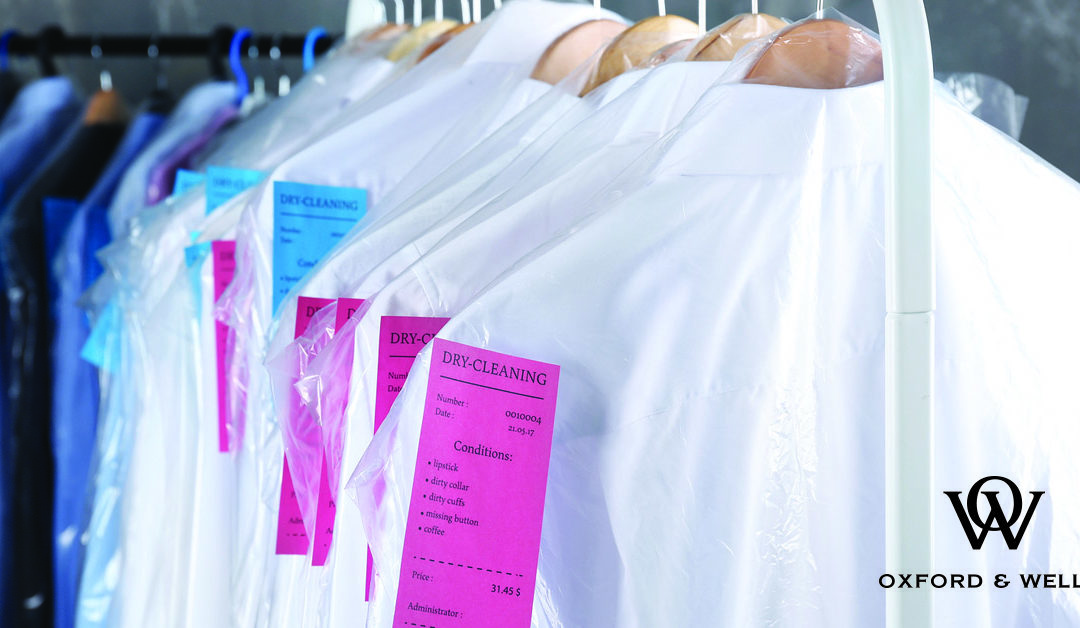How Toxic is Dry Cleaning?
Many consumers don’t know that dry cleaning isn’t actually dry. Recently the Environmental Protection Agency deemed perchloroethylene, the solvent used by most dry cleaners, as a likely carcinogen when inhaled. Oxford & Wells spray starch, on the other hand, is made with natural premium ingredients.
Safety of Dry Cleaning
People are faced with uncertainty in their health on a daily basis. But there are many choices that consumers can make which can protect against future illness, from making a commitment to daily exercise to making informed choices about laundry.
Most professional dry cleaning services use a liquid solvent to dissolve stains on garments. This solvent typically involves a chemical called perchloroethylene, or perc. While perc is highly effective at getting marks out of clothing, it is also a known health and environmental hazard. While it is used primarily by the dry cleaning industry, perc is also used as a metal degreaser in industrial cleaning.
Both the Environment Protection Agency (EPA) and the International Agency for Research on Cancer (IARC) have classified perc as a toxin. In fact, in 2012, the EPA classified perc as a “likely human carcinogen.” In other words, prolonged exposure to the chemical has been linked to an increased risk of cancer.
Specifically, the EPA’s 2012 press release warns that “Studies of dry cleaning workers exposed to tetrachloroethylene have shown associations between exposure and several types of cancer, specifically bladder cancer, non-Hodgkin lymphoma and multiple myeloma.”
Is Dry Cleaning Toxic?
The EPA estimates that 28,000 dry cleaners in the US use perc. In 2006, the agency tightened its requirements for the use of air twins in dry cleaning. The requirement includes the complete phase-out of perc machines in dry cleaners located in residential buildings by 2020. Some states, including New York and Illinois, have passed additional legislation clamping down on the use of perc.
The main health risk with perc is exposure through the air or soil. As a chlorinated hydrocarbon, perc breaks down very slowly in the air so it can travel long distances. What that means for consumers is that in urban areas there are trace amounts of it in the air even, if there is no dry cleaner nearby. According to the EPA, the effects of short-term exposure include dizziness, headaches, and loss of consciousness.
The New York Health Department recommendations for a safe level of perc in the air is no more than 30 micrograms per cubic meter. Unfortunately, measuring the levels of perc in the air, however, isn’t all that straightforward. In most areas, the authorities do not regularly monitor dry cleaning emissions. Generally, environmental agencies only monitor dry cleaning emissions when there has been a complaint or reason to suspect a contamination.
Is Dry Cleaning Safe?
Consumers are becoming increasingly aware of the health hazards of perc and its environmental impact. As a result, many are questioning why it’s taking so long for the chemical to be phased. In California, the biggest challenge in phasing out perc has been a resistance on the part of dry cleaners who think it’s the most effective way to clean clothes. Additionally, for small mom-and-pop dry cleaning businesses, replacing a perc machine represents an economic challenge.
The best option for consumers looking to avoid the potential toxic risks associated with dry cleaning is to launder clothes at home. Oxford & Wells Fine Care Products are as good for the environment as they are for your clothes. Our premium quality starch is 100 percent recyclable, cruelty-free, and eco-friendly. Discover why Oxford & Wells is the best asset for your fabrics.

Recent Comments